Latest News
CMB-S4 Director’s Review held on November 14-17, 2023
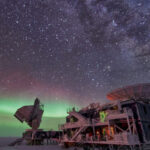
December 14, 2023
The CMB-S4 Director’s Review was held on November 14-17, 2023, to assess the project’s readiness in preparation for Department of Energy (DOE) and National Science Foundation (NSF) conceptual design reviews, both anticipated in 2024. CMB-S4 (the Cosmic Microwave Background Experiment – Stage 4) is a next-generation experiment being pursued as a joint DOE and NSF project […]
Read more >>
Experiment to Capture Universe’s Earliest Moments Reaches Funding Milestone
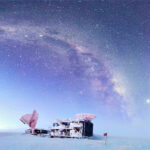
October 26, 2023
The National Science Foundation (NSF) has awarded up to $21.4 million for the design of telescopes for CMB-S4, a next-generation experiment that will study the cosmic microwave background (CMB) and help us understand the beginning, history, and makeup of the universe. The CMB-S4 project, which is jointly supported by the Department of Energy and the National Science Foundation, […]
Read more >>
CMB-S4 announces L2 and L3 management changes for the detectors subsystem
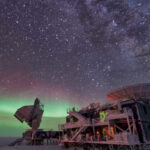
September 8, 2023
CMB-S4 Project Director Jim Strait recently announced Level-2 and Level-3 management team changes for the detectors team. Aritoki Suzuki – staff scientist in Berkeley Lab’s Physics Division since 2017– will become the Level-2 Scientist for the CMB-S4 detector subsystem. Suzuki brings a wealth of technical knowledge to CMB detector design, fabrication, and testing, and he has previously worked on […]
Read more >>
Latest Module and Wafer Testing Updates
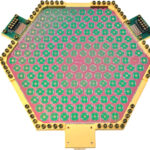
August 10, 2023
Several CMB-S4 technical subsystems made important advancements during the last few months. The project is entering an exciting development phase. The Module Assembly and Testing team at Fermilab was able to start the first 100 mK test of an integrated detector module including a detector wafer and readout module. Fig. 1 (below) shows the test […]
Read more >>
South Pole Telescope
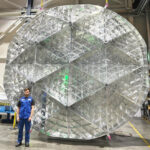
June 23, 2023
The CMB-S4 South Pole Large Aperture Telescope (SPLAT) team has recently authored two key scientific publications [ref. 1, ref. 2] related to the telescope and mirror designs and is working on a third publication describing the detailed optics design. In addition, Eric Chauvin Consulting has submitted to the project a SPLAT preliminary engineering design report […]
Read more >>
Detector Wafer Development
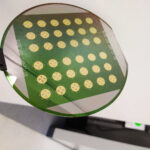
April 17, 2023
Fabrication of CMB-S4 prototype detector wafers is a key development goal for the project. The February newsletter highlighted the successful delivery of a first CMB-S4 prototype wafer produced by SEEQC/LBNL. This month we want to highlight ongoing work in our other wafer fabrication sites: NIST, JPL, UC Berkeley, and ANL. NIST is currently focused on […]
Read more >>
Small Aperture Telescopes
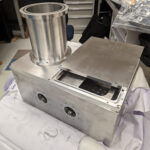
March 22, 2023
The Small Aperture Telescope (SAT) design team at CfA | Harvard & Smithsonian recently completed the assembly of a mini-cryostat for cryogenic testing of state-of-the-art optical materials to optimize the SAT telescope components. Fig. 5 (below) shows the newly fabricated vacuum chamber for the testing of optics components. In parallel, Berkeley Lab engineers continue to […]
Read more >>
Module Assembly and Testing
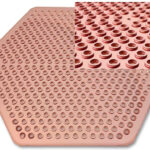
March 20, 2023
Fermilab is currently assembling components required to perform optical tests with the Large Aperture Telescope mid-frequency (LAT-MF) detector wafers. Fig. 1, below, shows the Fermilab dilution refrigerator being prepared for testing detector modules. 100 mK electronics circuits have been installed recently, and Fermilab scientists are now preparing the choke, waveguide interface plate, and backshort wafers. […]
Read more >>
Large Aperture Telescope Receiver Engineering
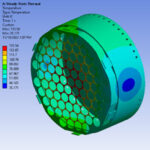
February 28, 2023
The Large Aperture Telescope (LAT) receiver engineering group has developed a first thermal model of the 50 K radiation shield. Due to the large receiver size this sub-component is challenging to design. The shield supports the alumina IR filters which need to be sufficiently cooled. Several options are currently being investigated to reduce thermal gradients, e.g. improved […]
Read more >>
New Cold Load for Module Testing
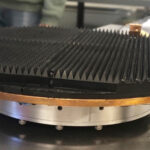
February 24, 2023
Fermilab, SLAC, Washington University in St. Louis, and University of Illinois Urbana-Champaign have set up module test cryostats to qualify future CMB-S4 prototype wafers and module components including readout electronics. Fig. 1, below, shows a single wafer test cryostat (cryogenic black-body cold load). Fig. 2 shows Ian Gullett (Case Western) and Cesiley King (WashU) and […]
Read more >>